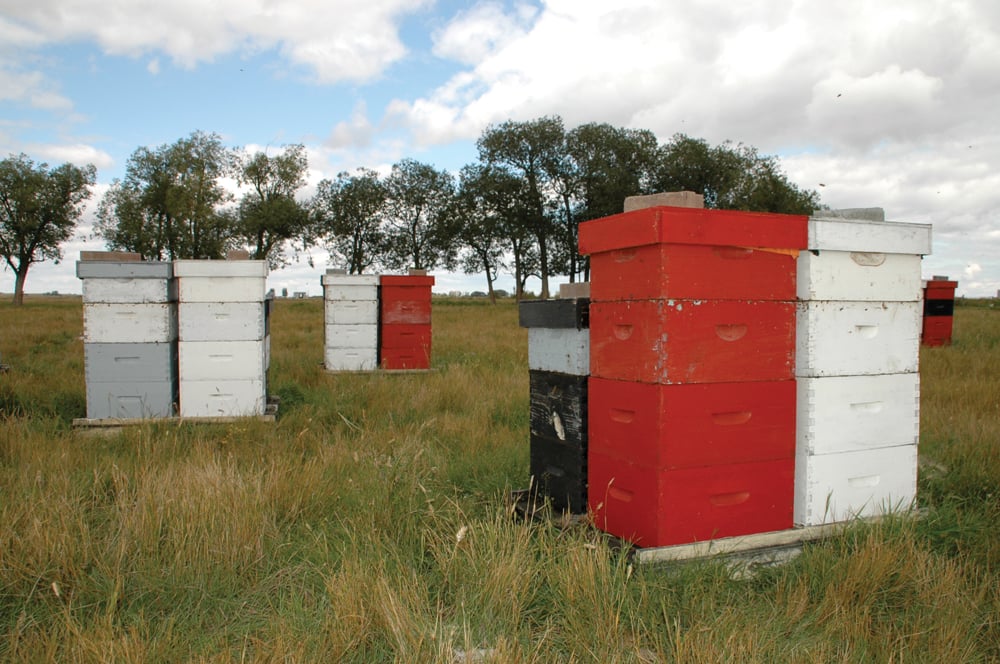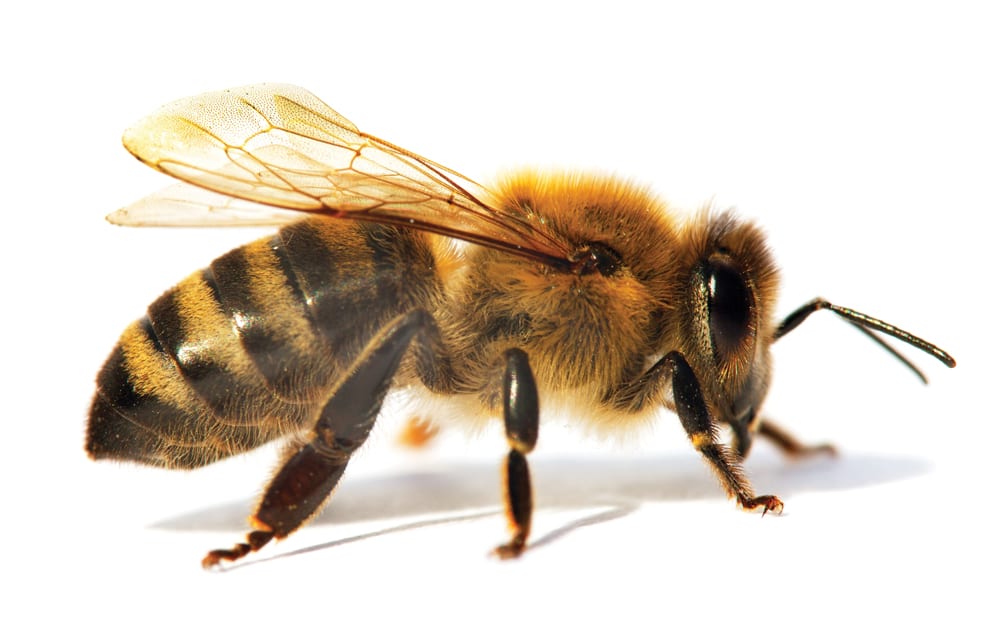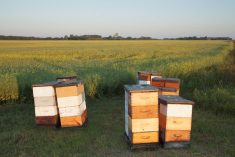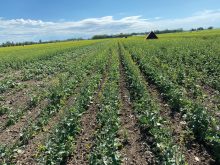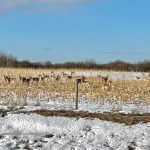We’ve heard a lot about honeybees in the last couple of years, particularly concerns that some crop protection products are a leading cause for the decline in bee numbers.
The finger has most recently been pointed at a chemical compound known as the neonicotinoid class of pesticide, which in the past decade or so has been used in seed treatments of common field crops such as canola, corn and soybean.
The critics suggest the pesticide is intended to systemically spread from the seed coating through the plant to provide protection against a number of pests, but in the process is killing pollinating bees through contaminated pollen and nectar. Manufacturers of the products as well as some scientists say there isn’t sufficient chemical in pollen or nectar to harm bees.
Read Also

Gentle treatments for pain in the neck
Heading toward year-end, people unknowingly tense up against the cold and busyness, causing neck pain that can often be treated with appropriate support and gentle mobility, athletic therapist Kathlyn Hossack says.
In the meantime the issue raises an emotional debate about what harm agricultural technology may be causing the environment. Dr. Ieuan Evans, a long-time Alberta based plant pathologist and a horticulture specialists in his own right, has his views on the situation.
In a recent article in an Agri-Trend Agrology newsletter, Strategic News, Dr. Evans who doesn’t have to be coaxed too hard to share his opinions, sets out what he considers are some truths about honeybees. Don’t get this wrong. Evans says the agriculture industry needs to have a good working relationship with beekeepers and of course be responsible with the proper use of all crop protection products. He’s just saying the whole issue needs to be kept in perspective.
As Dr. Evans says…
The public “believes that the honeybee is a ‘canary in the coal mine’ indicator that conventional agriculture threatening their very food source. I call baloney. Here are the facts.”
Point No .1
“Firstly, honeybees can technically be classified as invasive species since the honeybee, Aphis melifera, is not native to the Americas. The honeybee is native to Europe, Asia and Africa and in these continents, it exists in 20 or more strains, all of which are compatible breeding wise. Honeybees are now distributed worldwide, present on every continent except Antarctica. Worldwide, there are some 20,000 bee species including bumble bees.”
Point No. 2
“Secondly, most of our major prairie crops do not require honey-bees for pollination. Beekeepers and various and sundry individuals frequently tout the extreme value of bees to our food supply as pollinators of important and essential crops. However, until the Europeans settled the Americas, honeybees were unknown on this continent and the indigenous crops such as corn, beans, potatoes, tomatoes and squash managed very well.
“All of the major crops currently grown on the Prairies corn, soybean, pea, bean, forage grass, flax, barley, oat, wheat, rye, lentil and chickpea are either self- or wind-pollinated. Only sunflowers, canola, fava beans and buckwheat benefit from bees in addition to normal wind pollination. Alfalfa requires leaf cutter bees for pollination. Most trees are wind pollinated. Besides honeybees, there are hundreds of other species of native bee species and pollinating flies that visit crop flowers for both pollen and nectar. Horticultural crops such as potatoes, cabbages, asparagus, tomatoes, all root crops such as carrots, beets, parsnips do not require bees for crop production, except for production of true seed. Fruit crops, such as citrus, blueberries, cherries, almonds, plums, apples and members of the cucumber family do benefit significantly from bee pollination.”
Point No. 3
“Thirdly, in general producers have good relationships with the beekeepers that place beehives on their lands. While we are fully aware that insecticides will kill bees, farmers growing agricultural or horticultural crops are generally cognizant of the beehives in or near their cropland. Bee kills are avoided when farmers are informed. Communication is key in reducing bee deaths due to pesticide application.
“The furor over Colony Collapse Disorder has largely been blamed on pesticides; bees bringing the chemical home to the brood. When colonies die out or show very poor vigour or honey production, the easiest target to blame is not these natural causes but pesticides, in particular insecticides.
“However, more likely it is due to a combination of bee diseases such as foulbrood and chalkbrood, pests such as Varroa and Acarina mites and hive beetles. Honeybees have been “domesticated” for thousands of years in the “Old World” as prime producers of honey. Domestication has resulted in honeybees accumulating numerous fungal, bacterial, viral diseases, and insect and mite pests that now infest beehive colonies in North America. These pests and diseases certainly came from related honeybees species and likely other wild bee species. Unfortunately, these destructive pests and diseases can weaken even kill honeybees, particularly if the bees are subject to additional stress such as movement of hives or inclement weather condition such as wind, rain and cold.
“On top of that, Varroa mites have developed resistance to the miticides and the bacteria responsible for foulbrood have developed resistance to the main antibiotic used, making control difficult. The present concern over bee deaths due to corn or soybean seed treated with neonicotinoids has always seemed very farfetched to me.
“How can the insecticide dust from planted treated seeds arise and infest flowers in and around cropland? The dilution on the insecticide factor alone would be huge. And a recent report from Health Canada states that seed coated with imidacloprid, an insecticide known as a neonicotinoid, does not pose a risk to bee health.
“Now I enjoy the odd teaspoon of honey and the sound of honeybees pollinating my Mayday trees, and of course, we must endeavour to do our best to foster the honey industry, but at the same time we, as famers should not be blamed for honey industry problems.
“Producers must continue to use good bee-safe management tools and beekeepers need to control the pest infestations in their hives and to collaborate with responsible farmers in order to successfully maintain and profit from their industry. Honey producers together with their bees can then help optimize specific crop production where and when honeybees are needed.”


